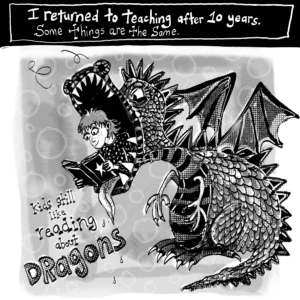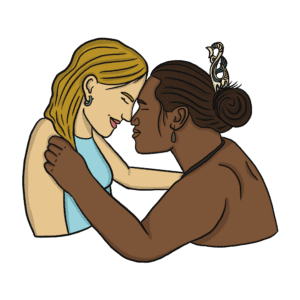



Ah, compulsory te reo Māori in mainstream schools. It’s a grazing table for politician-elects and a fear-inducing topic for overworked teachers. It’s been on the cards since 1972, when 33,000 people signed a petition approaching Government on the topic, but so far, it’s been a fruit too high to harvest.
Compulsion for me isn’t about language, but citizenship. We’re a country at a standstill on unified progression and, in my view, that standstill is caused by the ignorance that there’s only one single way to live a life. Ignorance leads to fear and scaremongering. The last decade or so has seen legislation questionably enacted, racism in schools and the New Zealand Police brought to light, prejudice in the legal system exposed and some pretty shocking behaviour from incoming local politicians. All these things leave just one thought in my head: if we’re going to fix what is broken, every individual in this country must be able to exercise great citizenship in their decision-making. We need to extinguish individual ignorance before it enters an institution capable of harm. To me, language compulsion seems one crucial way to ensure everyone gets some basic level of mutual communicative understanding, as well as the linguistic benefit.
I do think we need to be clear about what we expect from the process. There seems to be a misunderstanding it will make everyone fluent. It won’t. The life of the language is never going to reside entirely in the education space. There are gains to make there, sure, but fluency isn’t one of them. No one becomes seriously proficient in another language without support external to the school, so we’d do well to abandon that goal for more realistic ones. What we could achieve is great pronunciation, basic communication and a thorough understanding of place names, student names and culture. That would be an excellent outcome.
There is a legitimate fear from (mostly primary) teachers that they will need to get fluent, and quickly, in order to teach. That’s fair – teachers are already overworked and underpaid. A graduated, well-thought-out scaffolding of professional development is absolutely necessary to ensure they feel welcome, confident and able to participate, and that needs to exist before we enter the classroom.
I am worried that compulsion will land everything on the few Māori teachers around the country. They’re already overstretched and required to perform extra activities that are commonly requested in a disrespectful manner and also go unrewarded. We need to understand our own role in this, and be aware that we’re all required to contribute something meaningful. Leaving it to the few Māori people around isn’t meaningful, it’s merely perpetuation of the situation we already have.
Great citizens are ones who make meaningful attempts to learn about themselves, which can only come from being learned in the land they walk on. Too many of us are still exposed to unfounded and overexaggerated pub myths about Māori people and culture. It’s a deficit we could do without. A basic understanding of these tenets of our nation could move mountains for generations of souls currently being raised in the dark. Compulsion of the language would be a start.
Ko te whakapūmau i te reo ki te kura auraki. He whakapai kanohi mō te kaitōrangapū, he whakamataku hoki mō te kaiako pau te kaha. I tīmata tōna tohea i te tau 1972, i te hainatanga o te petihana e te 33,000, e rāhiri ana i te Kāwanatanga ki te kaupapa. Ā moroki nei, he hua teitei rawa kia katohia.
Mōku ake, ko te whakapūmau reo he whakapūmau tangata ki tōna whenua, engari ki te reo. Kua wehe rua tātou e kore e taea te anga whakamua, ko te pūtake o taua wehe rua, ko te kūware o te whakaaro kotahi anake te huarahi ora i tēnei ao. Nā kūware, ko mataku, ko whakamataku. I te ngahuru tau nei kua hē te whakatinana i te ture, kua kitea mai te kaikiri i te kura me Ngā Pirihimana o Aotearoa, kua mārama te tūkino i ngā kōti, me te kino hoki a ētahi kaitōrangapū kaunihera ā-rohe. Kotahi tonu taku whakaaro: e tika ai ēnei hara, me tika ngā whakataunga a tēnā tangata, a tēnā tangata i tēnei motu. Me whakamoe i tōna kūware, i mua rawa i tōna kuhunga ki tētahi whare pēnei, e taea ai te tūkino. Ki ahau nei, ko te whakapūmau i te reo tētahi huarahi matua e rite ai te mana o te tangata, i tua atu i ngā hua o te mōhio ki tētahi atu reo.
Me mārama tonu ki te hua ka puta i te whakapūmautanga. Tērā e pōhēhētia ka tohunga te katoa ki te reo, engari e kore rawa. E kore te reo e ora i te noho anake ki te kura. He hua ka taea, engari te matatau. E kore te matatau e taea ki te kore e āta tautokona ki waho o te kura, nā reira me tuku i taua pae tawhiti kia whai pae tata. Ko ngā whāinga pai pea ko te whakahua i te reo kia tika, kia rere, kia mārama ngā ingoa wāhi me ngā ingoa tauira, me te ahurea hoki. Kātahi te pai o ērā hua.
E kitea ana te māharahara i ētahi kaiako (kei te kura tuatahi pea te nuinga) me tohunga ki te reo i te wā poto, e taea ai te whakaako atu. E mārama ana – kua pau kē ō rātou kaha, mō te moni iti. Me whai i tētahi ara poutama e pakari haere ai rātou, e māia ai te tū, e kaha ai te hiahia ki te whakaako, ā, me eke aua wawata ā mua i te kuhu ki te rūma whakaako.
He āwangawanga ōku ka utaina ngā mahi nei ki ngā pokohiwi o ngā kaiako Māori tokoiti nei. He nui noa atu ā rātou mahi, he rite tonu hoki tā rātou karangahia kia tutuki ētahi atu mahi, me te takahi hoki o ō rātou mana i ētahi wā. Ka kore hoki e āta mihia aua mahi. Me mārama tātou, nō tātou katoa tēnei kaupapa, mā tātou katoa e whakatinana. Ko te waiho i te kaupapa ki te tokoiti he takahi noa iho i ō rātou mana, he tōai noa i ngā tūkino mau roa o te wā.
Ko te tangata pai o tētahi motu, he tangata e whai ana kia mau ngā akoranga mōna ake, mā te mōhio anake ki tōna whenua e pēnei ai. He rite tonu hoki tō tātou whāngaihia ki ngā kōrero pāparakāuta mō te Māori, ko te mutunga mārika mai o te hē. He tūkino tēnei me whakamoe. Mā te ako i ētahi kōrero iti noa ka taea ngā maunga whakahīhī te hiki kia tanuku, e tōia mai ai ngā reanga i te pōuri ki te ao mārama. Ko te whakapūmau i te reo te tīmatanga pai.
Dr Vincent Olsen-Reeder (Ngā Pōtiki a Tamapahore, Ngāti Pūkenga, Ngāi Te Rangi, Te Arawa) is a te reo Māori lecturer at Victoria University. He is a published fiction author, poet, songwriter and licensed translator.
Related Posts

After a decade away from the whiteboard, educator and comic artist Indira Neville has returned to teaching – and she’s drawing about it. In this comic series, Indira shares a glimpse into her days at school, capturing what’s changed, what’s stayed the same and what she never saw coming.

It’s often said that a nation’s budget reflects its values. If that’s true, then Budget 2025 tells us undeniably that children, especially our youngest tamariki, are not a priority.

Two years since it was made compulsory in schools, Heeni Collins (Ngāti Raukawa, Ngāti Haumia) finds out about the positive impacts of Aotearoa New Zealand’s histories curriculum on teachers and students, and the barriers they still face to implementing it.

In 2022, Ngāti Rēhia began a partnership with local schools in Kerikeri to incorporate its pūrākau and mātauranga into Aotearoa New Zealand’s histories curriculum. Ako Zoomed in to Kerikeri to hear from Riverview Primary School teacher Samantha Roessler and Ngāti Rēhia Matua Taua Kemp about the significance of this collaboration for their students and community.